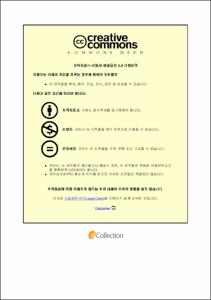The histological effects of bio-energy water on degenerated adductor muscle found endemically in cultured abalone, Haliotis discus hannai
- Alternative Title
- 양식 전복 변성 폐각근에 미치는 바이오기능수의 조직학적 영향
- Abstract
- This study was conducted to investigate the histological effect of bio-energy water on degenerated adductor muscle found endemically in cultured abalone (Haliotis discus hannai). Adult abalones averaging of total weight 60.15 ± 17.55 g, shell weight 16.93 ± 4.09 g, shell length 8.12 ± 0.76 cm, shell width 5.49 ± 0.46 cm, and shell height is 1.73 ± 0.76 cm was obtained from a farm in South Jeolla Province Wando County. H. discus hannai were divided into two treatment groups: first group was applied with the bio-energy water whilst the second group was applied with the general sea water. Abalones were collected in 5 samplings, 10 heads per sampling. Abalones were dissected to examine adductor muscle and measured. Adductor muscle tissues were fixed, re-fixed, processed, embedded with paraffin, sectioned and stained with H & E (Hematoxylin & Eosin) for light microscopy. Adductor muscle in 1st sample was found to consider as the whole necrotic muscle atrophy all of 10 individuals. Second sample as a control group in 1st week of bio-energy water, adductor muscle of abalones were found to be swelling, vitrified (hyalinization) and vacuolization. These findings showed atrophy and loss of muscle significantly in the both the first and second group. In the 2nd week, after bio-energy water was applied to the third sampling, abalones were not shown different with second sampling in general water group. However, abalone in bio-energy water showed that the muscle atrophy and losing had significantly improved with general water group. There was also noticeable increasing in the density of the muscle thickness and the muscle fibers vacuolization had disappeared of 9 individuals being investigated in these findings. Bio-energy water indicated the lesions, which confirmed, namely, shell mounting portion of the muscle adductor muscle edema, vitrification (hyalinization), vacuolization, atrophy and loss findings had improved significantly in the 3rd week and there was a significant improvement compared to the 2nd week. As the Adductor muscle grew thicker the density of the muscle in all cases and the vacuolization findings of muscle fibers almost disappeared. The 5th and final sampling after 8 weeks, showed the level in the adductor muscle and the muscle fibers in all cases had a complete clear recovery phase. The underlying mechanism for the striking effect for the muscle recovery could be possibly derived from the unique power of water molecules which makes all the bio-molecules sustain original normal structures of them for the proper functions in the tissue. This natural power of water molecule has long been hidden so far and should be deeply considered to be the main body of immune. From these results, the bio-energy water used in this study was highly recommendable for the recovery of necrotic muscle lesion of cultured abalone.
- Issued Date
- 2016
- Awarded Date
- 2016. 2
- Type
- Dissertation
- Publisher
- 부경대학교 글로벌수산대학원
- Affiliation
- 부경대학교 글로벌수산대학원
- Department
- 글로벌수산대학원 국제수산과학협동과정
- Advisor
- 허민도
- Table Of Contents
- Tables of contents i
List of Figures iv
List of Tables v
Abstract vi
Introduction 1
Materials and Methods 8
1. Abalone source 8
2. Experimental design 8
3. Sample collection 9
4. Histological methods 9
4.1. Dissection 9
4.2. Fixation and Re-fixation 10
4.3. Tissue processing 10
4.4. Embedding 11
4.5. Sectioning 11
4.6. Staining 11
4.7. Mounting 13
5. Photography 13
6. Anatomical examination 13
7. Histological evaluation 14
Results 16
1. First sampling 16
1.1. Anatomical measurements 16
2. Second sampling 20
2.1 Anatomical measurement 20
2.2. Histological evaluation 21
2.2.1. Abalone in general water group 21
2.2.2. Abalone in bio-energy water group 21
3. Third sampling 24
3.1 Anatomical measurement 24
3.2. Histological evaluation 25
3.2.1. Abalone in general water group 25
3.2.2. Abalone in bio-energy water group 25
4. Fourth sampling 29
4.1 Anatomical measurement 29
4.2. Histological evaluation 30
4.2.1. Abalone in general water group 30
4.2.2. Abalone in bio-energy water group 30
5. Fifth sampling 34
5.1 Anatomical measurement 34
5.2. Histological evaluation 35
5.2.1. Abalone in general water group 35
5.2.2. Abalone in bio-energy water group 35
Discussion 38
Acknowledgements 43
References 45
- Degree
- Master
- Appears in Collections:
- 글로벌수산대학원 > 국제수산과학협동과정
- Files in This Item:
-
-
Download
 The histological effects of bio-energy water on degenerated adductor muscle found endemically in cul.pdf
기타 데이터 / 5.34 MB / Adobe PDF
The histological effects of bio-energy water on degenerated adductor muscle found endemically in cul.pdf
기타 데이터 / 5.34 MB / Adobe PDF
-
Items in Repository are protected by copyright, with all rights reserved, unless otherwise indicated.